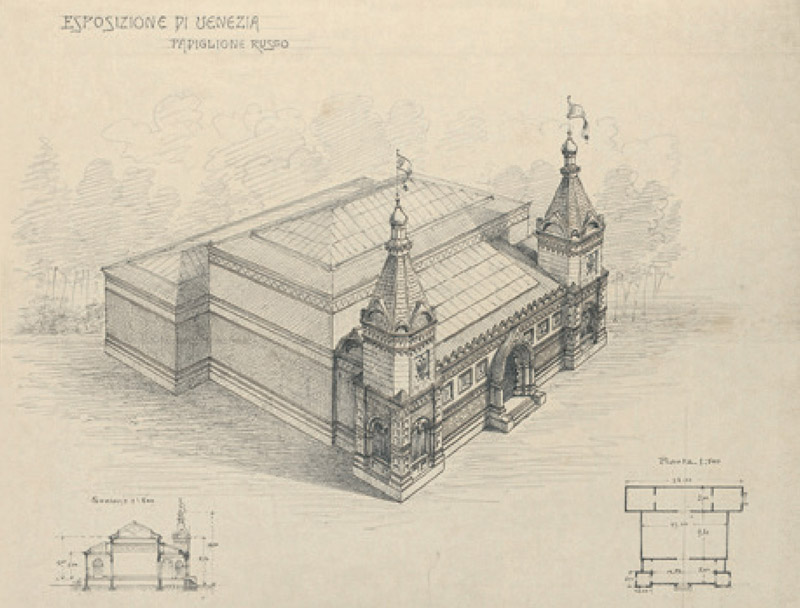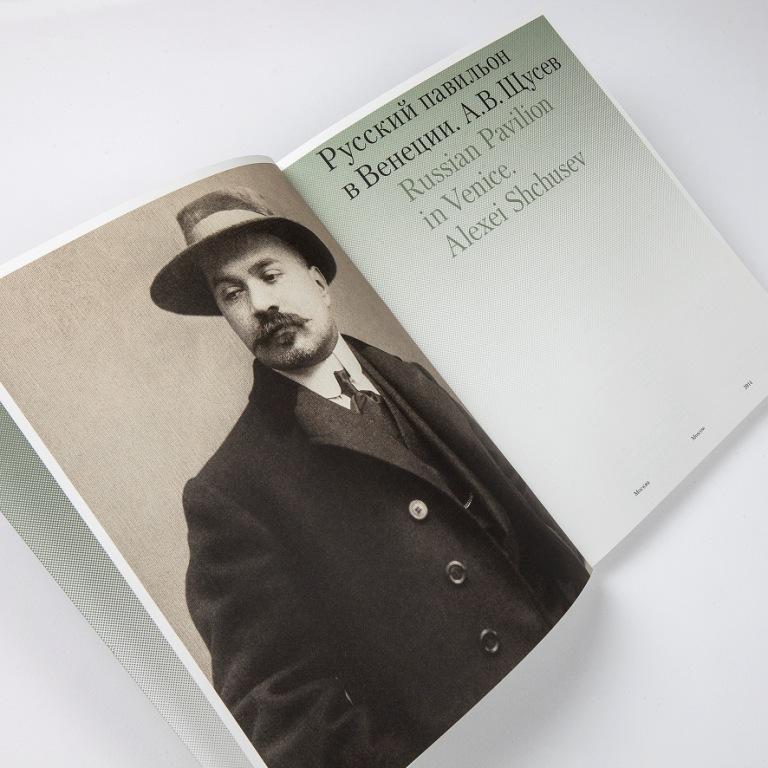100 years of the Russian pavilion in Venice

For the 100th anniversary of the opening of the Russian Pavilion at the 11th International Art Exhibition in Venice, the Garage Museum of Contemporary Art published an album of archival materials which in great detail reveals the design of the pavilion, the author of which is the famous architect Alexei Shchusev.

The Russian Pavilion at the largest international art exhibition began in the 1900s with the success of Sergei Diaghilev’s exposition in 1907 and Emperor Nicholas II’s visit to Italy in 1909. In response to the growing interest in Russian art it was decided to build a special building for it — the first and only permanent Russian exhibition space abroad, which until then was limited to a section in the common areas of the Exhibition Palace (Palazzo delle Esposizione).

The Venice Biennale has always been an international exhibition of avant-garde art (in 1975 the architectural avant-garde was added to it). The design of the Academy of Arts Pavilion was entrusted to the prominent architect Alexei Shchusev who masterfully designed and built in all styles of his era. For the pavilion in Venice the architect proposed the “Russian style” that was popular in Europe in the early 20th century, as well as borrowing motifs from his earlier successful project of the Kazan train station in Moscow.
Russia up to that time had never erected a major pavilion at international exhibitions, but Shchusev dealt with his task brilliantly. The pavilion presented a graceful combination of the “Russian style” with quotations from the unique architecture of Venice. The architect thought out the project to the smallest details, even especially creating for it sketches of furniture.

Unfortunately, the authentic furnishings have not survived to the present day and the building itself has suffered some loss: for instance, the wooden gate with a lion and unicorn has faded, part of the windows were blocked up, and the terrace behind the pavilion with a magnificent view of the lagoon was forgotten and is now used for technical needs. However, given that today with each new exhibition the space of the pavilion is changed and practically constructed anew, it has remained in generally good shape. Four years ago, the building finally was thoroughly repaired after an incident in 2008 when the roof began to leak directly on the heads of visitors.

Considering the pavilion’s centennial it is especially nice to see that after a century, again the attention of multinational crowds are focused on it: two years in a row it has received a special prize at the Architecture Biennale — in 2012 for the i-city/i-land exposition, one of the authors of which was Chief Architect Sergey Kuznetsov, and this year — for the project Fair Enough by the Strelka Institute.
At the 14th Biennale for the first time Russia was featured in a new space — a pavilion with Moscow’s exposition, which was housed in the halls of the church of Santa Maria della Pieta. However, the main place of attendance, the “embassy” of Russia in the international art scene, continues to be Shchusev’s pavilion in the Giardini gardens: it is still elegant and modest, and at the same time mighty with the history of victories and recognition of our artistic and architectural avant-garde abroad.
- Tags:
- events |
- exhibitions |
- heritage |
- Venice






